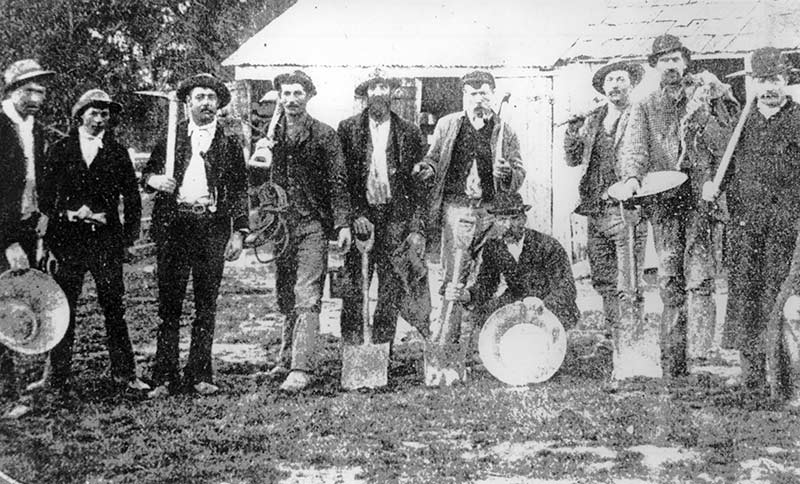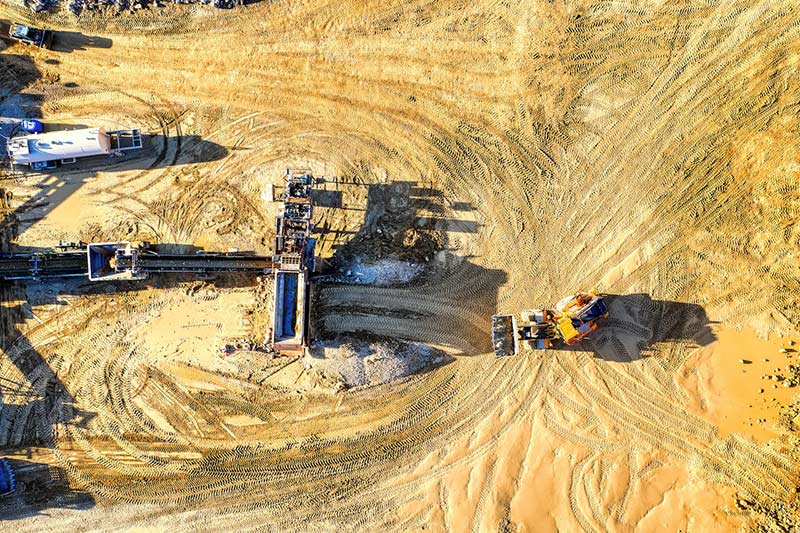Introduction
The California Gold Rush, which began in 1848, was one of the most significant events in American history. It was a time of great excitement and opportunity, as thousands of people from all over the world flocked to California in search of gold. The discovery of gold in the state sparked a massive migration of people, who came from all walks of life to seek their fortunes. The gold rush had a profound impact on the economy and society of California, as well as the United States as a whole. It played a key role in the development of the American West, and its legacy can still be felt today. This article will take a look back at the California Gold Rush, exploring its causes, its impact, and its lasting legacy.
The Discovery of Gold
The discovery of gold in California in 1848 was the spark that ignited the California Gold Rush. The story of the discovery is a fascinating one that began with a man named James Marshall, who was building a sawmill for John Sutter on the American River. On January 24, 1848, while inspecting the construction of the mill, Marshall spotted something shiny in the riverbed. Upon investigation, he discovered that it was gold. The news of the discovery quickly spread, and it wasn’t long before people from all over the world were flocking to California in search of their own fortunes.
The impact of the discovery of gold in California was far-reaching and profound. In the years leading up to the rush, California had been a sparsely populated, relatively isolated territory. The discovery of gold brought a sudden influx of people from all over the world, with the population of California increasing from around 15,000 in 1848 to over 200,000 by 1852. This sudden increase in population brought many challenges, including housing shortages, food shortages, and a lack of infrastructure.
The impact of the discovery of gold was not limited to California. The gold rush had a significant impact on the United States as a whole. The sudden influx of gold into the economy helped to stimulate growth and development, and the gold rush played a key role in the expansion of the American West. It also attracted immigrants from all over the world, and the gold rush played a key role in shaping the diverse population of California and the United States.
The California Gold Rush Begins
Once the news of the discovery of gold in California spread, people from all over the world began to flock to the state in search of their fortunes. This migration, known as the “Rush,” brought tens of thousands of people from all walks of life, including farmers, merchants, tradespeople, and adventurers. They were known as the “forty-niners” because the rush began in 1849.
The journey to California was not an easy one. Many people traveled by land, crossing the Great Plains and the Rocky Mountains, facing harsh weather conditions, and dealing with the dangers of Indian attacks and bandits. Others traveled by sea, making the treacherous journey around Cape Horn or through the Isthmus of Panama. Regardless of the route taken, the journey was long, difficult, and often deadly.
Upon arrival, the forty-niners faced many challenges and difficulties. The most pressing issue was the lack of resources, including food, housing, and supplies. Many of the forty-niners were ill-prepared for the harsh conditions of the California wilderness, and many suffered from disease, starvation, and exposure. The sudden influx of people also created a strain on the existing infrastructure, and the gold rush brought many social and economic problems. Despite these challenges, the forty-niners were driven by the promise of wealth and the hope of a better life, and they continued to pour into California in search of gold.
The Economic and Social Impact
The California Gold Rush had a significant impact on the economy of California and the United States. The sudden influx of gold into the economy helped to stimulate growth and development, and the gold rush played a key role in the expansion of the American West. The gold rush also attracted immigrants from all over the world, and it played a key role in shaping the diverse population of California and the United States. The gold mining industry also created new jobs and opportunities for entrepreneurs, merchants, and tradespeople.
However, the gold rush also had a negative impact on the environment and the indigenous population of California. The gold mining operations caused significant damage to the natural landscape, and the influx of people brought new diseases and conflicts with the indigenous population. The gold rush also brought a wave of violence, as prospectors fought over claims, and the indigenous population was often displaced or killed.
The gold rush also brought significant social and cultural changes. The sudden influx of people from diverse backgrounds created a melting pot of cultures and traditions, and the gold rush played a key role in shaping the cultural identity of California and the United States. The gold rush also brought a wave of social problems, including crime, poverty, and inequality.
The gold rush also created a lot of wealth and opportunities in California, but it also brought many problems that the state and the country had to deal with, it brought a lot of people in a short period of time and it was not easy to handle this sudden change.
The End of the California Gold Rush
The California Gold Rush lasted for several years, but eventually, the easy gold began to run out and the rush began to decline. The reasons for the decline were several. Many of the gold deposits were depleted, and the cost of mining the remaining gold became increasingly expensive. The discovery of new gold deposits in other parts of the world, such as Australia and South Africa, also drew prospectors away from California. Additionally, as the population of California grew, the state’s infrastructure improved, and the economy diversified, many people found that there were more stable and profitable opportunities elsewhere.
Despite the decline of the gold rush, the legacy of the California Gold Rush lives on in California and American history. The gold rush played a key role in the expansion of the American West and the development of California as a state. The gold rush also brought a diverse population of people from all over the world, and it played a key role in shaping the cultural identity of California and the United States. The gold rush also had a lasting impact on the environment and the indigenous population of California.
The gold rush also left a legacy of economic growth and development, as well as social and cultural change. Today, California is one of the most populous and economically powerful states in the United States, and the gold rush played a key role in its development. It also served as a reminder of the American dream, the idea that anyone can come to America and make their fortunes, it’s also a symbol of the American spirit of adventure and determination.
Conclusion
In conclusion, the California Gold Rush was a significant event in American history that had a lasting impact on the economy, society, and culture of California and the United States. The discovery of gold in 1848 sparked a massive migration of people from all over the world to California in search of riches. The gold rush brought economic growth and development, as well as social and cultural change.
The gold rush also had a significant impact on the environment and the indigenous population of California. The gold mining operations caused significant damage to the natural landscape, and the influx of people brought new diseases and conflicts with the indigenous population.
However, the gold rush also brought a wave of violence, as prospectors fought over claims, and the indigenous population was often displaced or killed. Despite the decline of the gold rush, the legacy of the California Gold Rush lives on in California and American history. Today, California is one of the most populous and economically powerful states in the United States, and the gold rush played a key role in its development. The gold rush served as a reminder of the American dream and the spirit of adventure and determination that continues to define the American experience.



